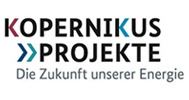SynErgie
Energy flexibilisation: Fine-tuning supply and demand in industry
By 2045, Germany's electricity is to come entirely from renewable sources. Fluctuations are inevitable: Wind and sun are not always available to the same extent. The Kopernikus project SynErgie is investigating how industry can help to balance out these fluctuations. To do this, it must flexibly adapt its demand to the electricity supply - i.e. increase or reduce its consumption in a targeted manner - without processes or product quality suffering.

In Germany, industry alone consumes 44 percent of the electricity and a good third of the energy for heating purposes. This means that industry has enormous potential to compensate for fluctuations in the electricity grid caused by renewable energies. If the wind and sun supply too little energy, industry can adjust its electricity and heat demand and reduce consumption until more electricity is available again. The opposite is also possible: if more electricity is generated than is actually needed for a short time, companies can deliberately increase their consumption to compensate for fluctuations. Scientists call this adjustment "demand side management". Demand side management is so central to a successful energy transition because the demand in the electricity grid must be as high as the supply at all times - otherwise the grid will collapse.
Solutions for particularly energy-intensive industries
The Kopernikus project SynErgie is researching how industry can make these adjustments. The foundation for this was laid in the first two funding phases. In the third phase, focus lies on implementation and demonstration. At the same time, the project partners want to tap into new, particularly strong energy flexibility potential. One of the goals of the third project phase is to cover up to 20 gigawatts (GW) of industrial flexibility potential in Germany. At the same time, this reduces the need for other flexibility options, such as cost-intensive battery storage.
SynErgie can already look back on several successes from the first two phases, including the following:
SynErgie was able to determine how much energy German industry could use either more or less in the event of grid fluctuations. If more electricity is available in the grid than is actually needed, German industry could increase its demand by up to 9 gigawatts (GW) for 15 minutes. If less electricity is available than is currently needed, industry could reduce its demand by 10.7 GW for 15 minutes.
In total, the flexibility potential corresponds to the output of around 5,620 on-shore wind turbines.
The flexible adjustment of industry to fluctuations in the electricity grid is already being applied above all by those companies that consume particularly large amounts of electricity. Germany's largest private-sector electricity consumer is the Essen-based aluminium manufacturer TRIMET. TRIMET accounts for 1.6 percent of Germany's total electricity demand annually. Until SynErgie was launched, TRIMET was dependent on the constant use of electricity: Any fluctuation could have damaged the aluminium furnaces on site. The strong electric current creates a magnetic field in the huge electrolysers. If the electricity fluctuates, this magnetic field fluctuates and the whole furnace goes out of balance. SynErgie, together with TRIMET, has now found a way to keep the magnetic field constant even when the current fluctuates. This allows the Essen-based company to increase or decrease its electricity consumption by 22.5 megawatts for up to two days. This corresponds to the power of about 25,000 three-person households.
The air separation plants of the gas company Linde consume a similar amount of electricity as TRIMET. Air separation means splitting air into its components in order to extract rare gases. Until now, this was only possible with a constant high current. SynErgie has developed a plant for flexible air separation. This has successfully gone into operation in Denmark.
Together with its partner UPM AG, SynErgie has been researching the flexibilisation of energy-intensive paper production. Through technological and organisational innovations, the flexibility potential could also be significantly increased here.
In the Augsburg model region, the partners have been testing their approaches in practice for a long time. In doing so, they want to offer companies incentives to convert in such a way that they can specifically use more or less electricity. Here the project has shown that the technologies developed also work efficiently on a broad scale. In the model region, energy suppliers, grid operators, industrial companies, research institutions, citizens' initiatives and regional politicians worked together to develop local approaches to balancing electricity fluctuations. Flexibility trading via an energy synchronisation platform was successfully demonstrated. Further information is available on this subpage (in German only).
Phase 3: International perspective and additional industrial partners
Globally, flexibilisation is relevant for strong economic locations (for example, USA, Australia) as well as for developing and emerging countries. This means that there is attractive export potential for the technologies and solutions developed in SynErgie. German industry has a special role to play as a supplier to global factories. This is because flexibility can not only be used in their own factories, but also transcends industry and national borders. In phase three, 75 percent of the consortium is made up of industrial partners - this shows the economic importance of SynErgie for companies.
Augsburg model region as focus for demonstration projects
The cooperation with regional electricity grid operators, electricity suppliers and civil society enables a sound, systemic analysis of the results. The model region will be further strengthened. In Augsburg and the surrounding area alone, 17 implementation projects are planned. A special feature is the consideration of industrial districts. In these, SynErgie investigates, implements and demonstrates the energy flexibilisation of a group of companies integrated within a geographically delimited area.
- "Energy flexibility in the Stadtbach industrial quarter - testbed and demonstrator market and power system". Practice partners: UPM, MAN, Stadtwerke Augsburg.
- "Sustainable Flexquartier for cross-company energy flexibility management in the Ungershausen industrial quarter". Practice partners: Alois Müller, CB-Tec, DPD.
Removing legal and regulatory obstacles
The results of SynErgie are extremely promising. Flexibilisation in industry holds enormous potential for stabilising the German electricity grid. However, the legislation in its current form "punishes" measures of flexibilisation rather than creating incentives for them. For example, grid fees and the EEG levy are linked to constant electricity consumption. For this reason, SynErgie has prepared a detailed position paper (German only) on the current status. In addition, the researchers and partners have worked out in a summary which regulations urgently need to be adapted in order to be able to use the potential of the industry. A SynErgie white paper shows how the electricity market design would have to change in the long term in order to take grid restrictions and flexibility potential - especially on the demand side - into account.


